9 ACTIVITIES TO TEACH THE CONTINENTS FOR KIDS
Knowing some geography can really help kids appreciate the incredible diversity of life on our planet. Teaching children about the continents is an exciting way to introduce the world map to them.
We can make this educational experience a fun one by adding hands on activities, creative crafts and engaging books.
Here is a list of variety of activities to teach kids about continents. Let’s dive in!
Related Articles:
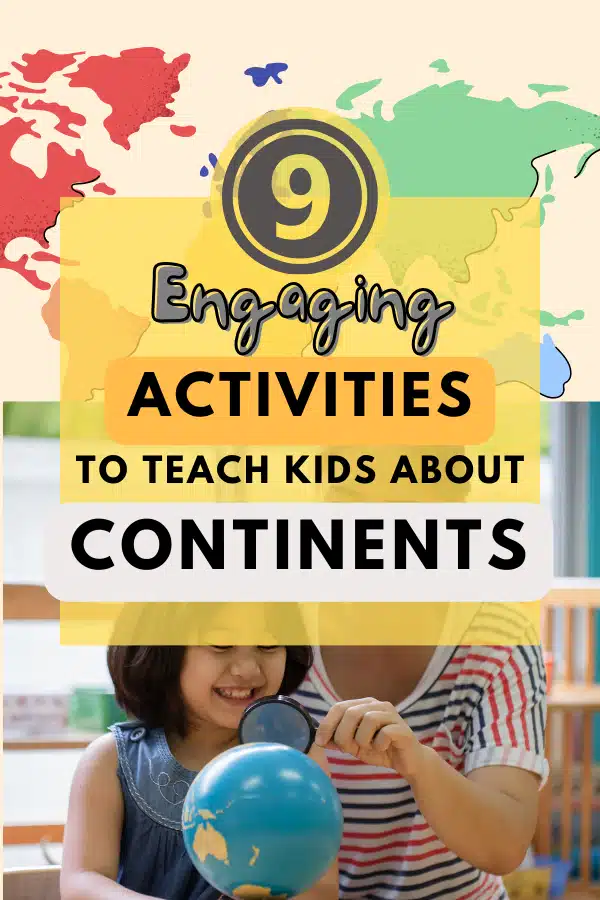
Let's Explore The Seven Continents
Let’s learn about the continents so you can prepare yourself with some fun facts!
1. North America
Home to the United States, Canada, and Mexico, this continent is a melting pot of cultures, wildlife, and jaw-dropping landscapes.
2. South America
Down south, we find South America, a continent bursting with vibrant colours and breath-taking scenery. From the Amazon Rainforest, the world’s largest, to the mighty Andes Mountains, this is a place where nature shows off its most impressive creations.
3. Europe
Travel back in time as we step into Europe, a continent steeped in history and culture. With castles, cathedrals, and charming villages, Europe has a story to tell at every turn. It’s also home to the Eiffel Tower, the Colosseum, and many more iconic landmarks.
4. Africa
Welcome to Africa, the continent where life began! With vast deserts, lush savannas, and diverse wildlife, Africa is a safari of adventure. Did you know it’s home to the world’s longest river, the Nile and the incredible Serengeti migration?
5. Asia
Asia, the largest and most diverse continent, is a land of contrasts. From the snowy peaks of the Himalayas to the bustling streets of Tokyo, each corner has its own unique charm. It’s also where you’ll find the Great Wall of China, a wonder visible from space!
6. Australia
Let’s hop over to the Land Down Under—Australia! This continent, surrounded by the sparkling waters of the Pacific and Indian Oceans, is home to unique wildlife, including kangaroos, koalas, and the iconic Sydney Opera House.
7. Antarctica
A continent covered in snow and ice. Despite its chilly reputation, Antarctica is a haven for incredible wildlife like penguins and seals. Did you know it’s also the windiest and driest continent on Earth?
Engaging Activities To Teach Continents For Kids
Continent Puzzles
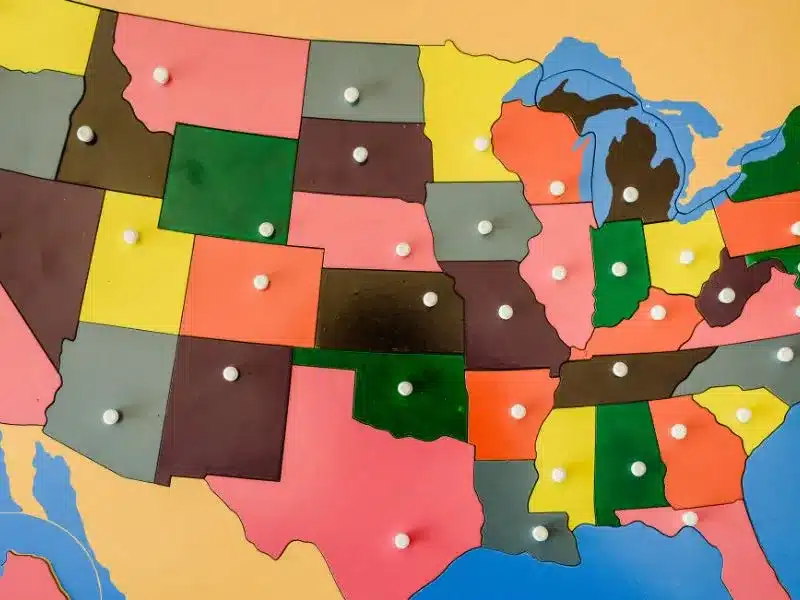
Let little ones piece together a puzzle of continents, these can act as interactive maps.
Imagine the excitement as kids fit together the jigsaw pieces, slowly revealing the shapes of North America, South America, Europe, Africa, Asia, Australia, and Antarctica.
Here is a wooden continents puzzle I would recommend for kids. It’s not just a puzzle. The pieces are cut to continents shape, making it easy for kids to recognize them.
So, grab this puzzle or one from your local toy shop and gather your little explorers.
Instructions:
- Provide them with the continent puzzle pieces.
- Talk about each continent and some fun facts with the kids.
- Encourage them to assemble the puzzle, reinforcing their knowledge of continent shapes and locations.
Continent Bingo
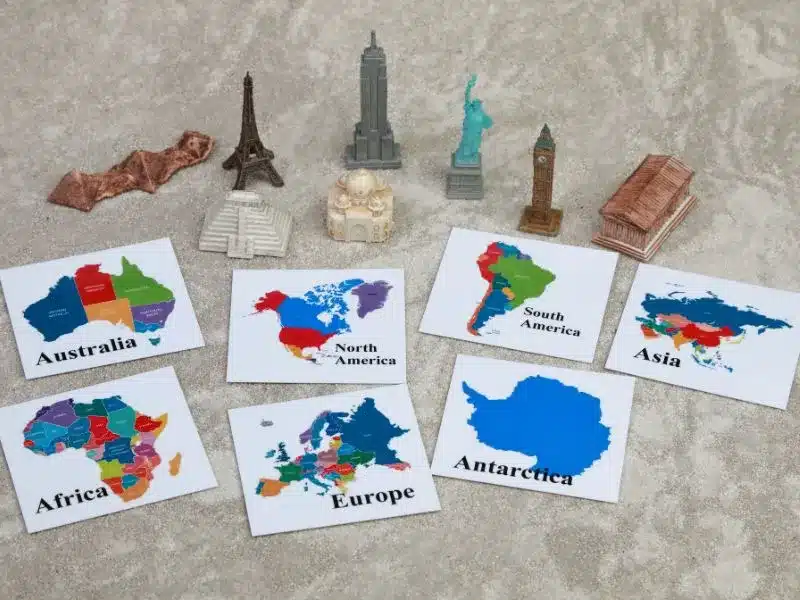
This is a fun and interactive way to learn continent names and locations. It can be more fun as a group game.
Materials Needed: Continent Bingo cards (available to buy or create your own), markers or chips.
Instructions:
- Distribute Bingo cards to everyone.
- Children mark off continents as they are called out.
- Use fun facts or simple clues to announce each continent.
- The first player to complete a row shouts, “Bingo!”
Make a World Map To Show Continents
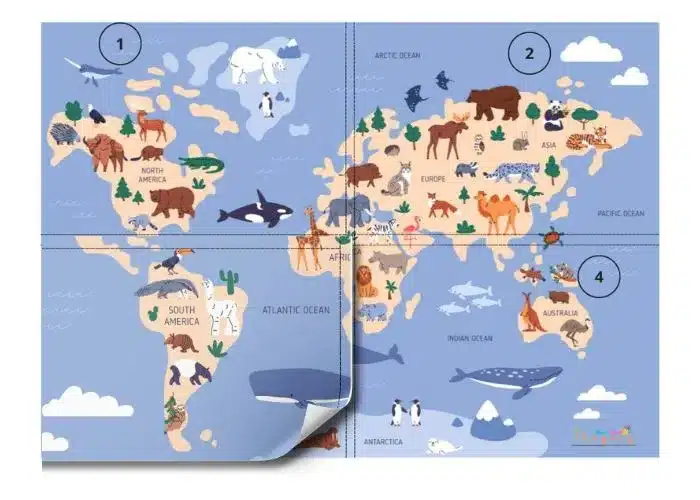
Creating your own world map is the best way to teach kids about continents
Download this four-part map for free and use it to teach your kids about the continents and where they are located.
When all the pieces are combined, you will get a bigger (A2 size) map to hang on the wall.
Materials : Print the downloaded map on A4 papers, Glue/Sticky tape
Instructions :
- Attach part-3 and part-4 together by aligning the dashed lines
- Then attach part-1 the same way.
- Finally attach the part 2
- Hang the map on a wall, so kids can easily see it.
TRY FOODS FROM Different CuLTURES
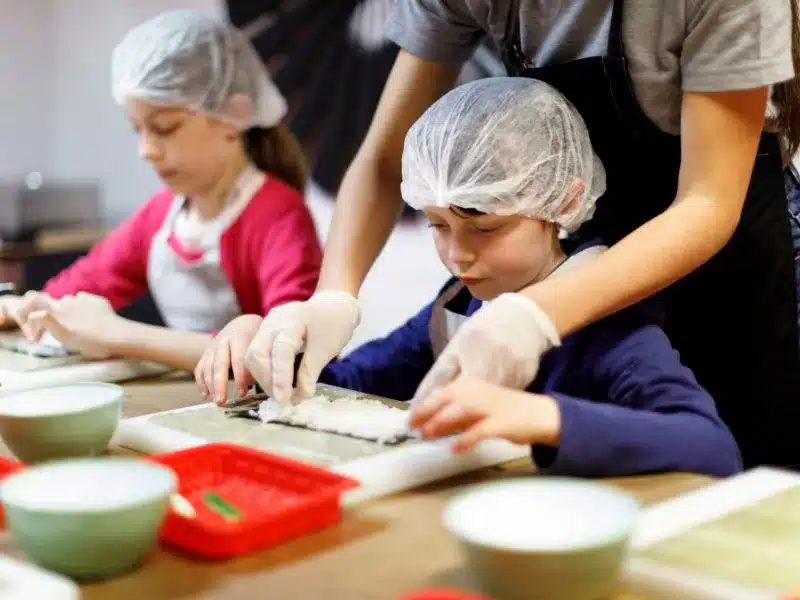
Introduce children to the diverse flavours of the world by exploring traditional foods from various continents.
You can do a simple cooking activity where kids prepare or sample dishes from different cultures. Talk about where they’re coming from and what’s special about them.
Reading Books To Teach The Continents
These are a couple of great books to teach about continents for kids. Depending on their age, you can add more facts while you are reading the books.
Find more books written for each continent in your local library.
Me on the Map, by Joan Sweeney
This is a fantastic pick to teach little ones about their place in the world. Zooming from bedrooms to neighbourhoods and eventually showing the vastness of continents.
THE Everything Kids’ Geography Book, BY Jane Gardner & Elizabeth Mills
This book will help kids learn the locations of states, countries, and continents around the world. Suitable for older primary schoolers.
Art And Craft Projects To Teach The Continents
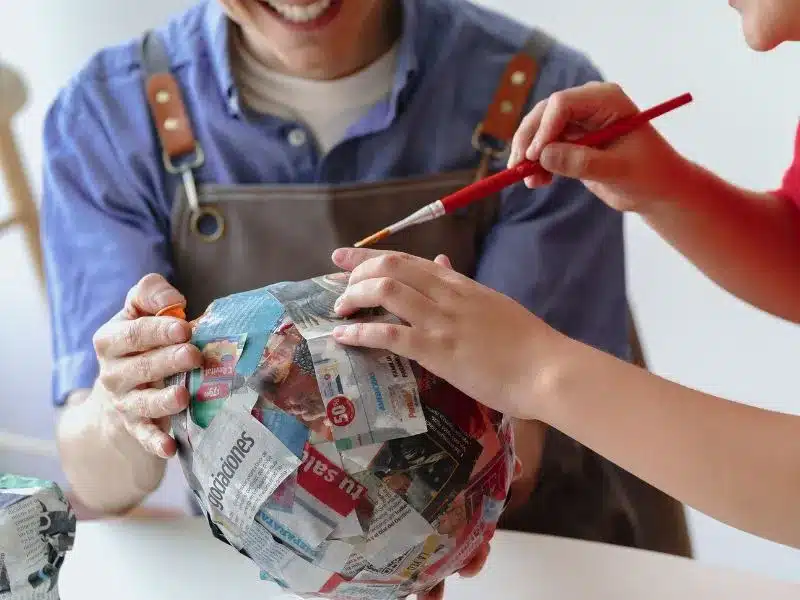
Creating a Paper Mache Globe
This is a great hands-on activity to learn about the continents and their location.
Materials:
- Balloon
- Newspaper strips
- White glue or flour and water mixture
- Paints
- Paintbrushes
- String or wire for hanging
Steps:
- Inflate a balloon to the desired size for your globe.
- Mix white glue with a little water or make a paste with flour and water to create paper mache adhesive.
- Dip newspaper strips into the adhesive mixture and cover the balloon, leaving a gap near the knot for deflation later.
- Apply several layers of newspaper strips, allowing each layer to dry before adding the next.
- Once the paper mache is completely dry, pop the balloon and remove it from the hardened globe.
- Paint the globe with blue and green colours to represent the oceans and continents.
- Use a map to add details like country borders and major geographical features (depending on their ages)
- Allow the paint to dry, and your paper mache globe is ready! Hang it with string or wire for display.
Painting or Drawing the Shape of Each Continent
Materials:
- Paper or canvas
- Paints or markers
- Brushes
Steps:
- Provide kids with a blank sheet of paper or canvas.
- Using a map or globe, have them paint or draw the shape of each continent on their canvas.
- Encourage creativity by allowing kids to choose their own colours and artistic styles.
- Once the outlines are complete, add details like country borders, landmarks, or indigenous animals. (depending on their age)
- Discuss the characteristics of each continent as they work on their artwork.
Creating a Continent Mobile using Craft Materials
Materials:
- Coloured construction paper
- String or yarn
- Hole punch
- Craft glue
- Scissors
- Markers or crayons
Steps:
- Cut out shapes representing each continent from coloured construction paper.
- Decorate each shape with markers or crayons, adding details that reflect the unique features of each continent.
- Punch a hole near the top of each continent shape.
- Cut several pieces of string or yarn to the desired length for hanging.
- Attach the strings to each continent shape by threading them through the punched hole and securing them with knots.
- Hang the continent shapes at varying lengths from a horizontal dowel or a hanger to create a continent mobile.
- Hang the mobile in a space where kids can observe and talk about the continents as they gently rotate.
MAKING CONTINENT COLLAGES USING MAGAZINES AND NEWSPAPERS
Another creative way to teach the continents to kids. However, this will be appropriate for primary schoolers.
Materials:
- Magazines and newspapers
- Scissors
- Glue
- Large sheets of paper or poster board
- Markers
Steps:
- Gather magazines and newspapers featuring images of landscapes, people, and animals from around the world.
- Cut out pictures representing each continent. Encourage kids to find diverse images that showcase the unique characteristics of each region.
- Arrange the cut-out pictures on large sheets of paper or poster board in the shape of continents.
- Glue the images onto the paper, creating vibrant continent collages.
- Use markers to label each continent and add any additional details.
- Talk about the collages, pointing out the features that make each continent special.
Other Resources
Online apps, interactive maps and educational websites for teaching about continents can be really effective.
National Geographic Kids
National Geographic Kids offers a variety of videos and activities that explore continents, countries, and cultures. National geography
Geography Games
Sheppard Software’s geography section has a number of games that teach kids about continents, countries, and capitals through quizzes and interactive maps. Continent Games
Benefits of Teaching Continents For Kids
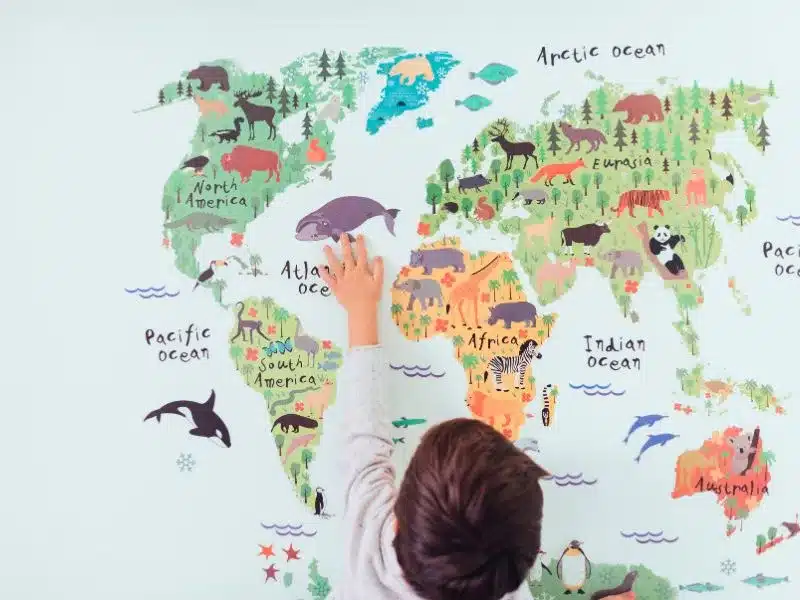
Teaching about continents offers a holistic approach to early childhood development, incorporating geography, culture, history, and environmental awareness.
Geographical Awareness
Learning about continents helps children develop a sense of space and location on the Earth. This knowledge is fundamental for understanding maps and directions.
Cultural Diversity
Each continent has its own unique cultures, languages, and traditions. Teaching about continents exposes children to the rich diversity of the world, promoting cultural awareness and tolerance.
Environmental Awareness
Each continent has distinct ecosystems and climates. Teaching about continents allows children to learn about the variety of environments, from tropical rainforests to icy polar regions.
Language Development
Learning about continents introduces children to new geographical terms, enhancing their vocabulary and language skills.
Math Skills
Studying maps and understanding the positions of continents can enhance spatial reasoning skills. Learn more about developing math skills for kids.
Historical Significance
Learning about continents may involve exploring historical events and civilisations, providing a foundation for later studies in history and social studies.
Above all, learning about continents can help children develop a sense of belonging to a larger global community.
Conclusion
Through creative activities, interactive games, and thoughtful discussions about diverse cultures and traditions, we can lay the foundation for a global mindset.
During these early years, the knowledge gained about continents becomes the starting point for a lifelong journey of exploration and a deep affection for our amazing planet, which we proudly call home!
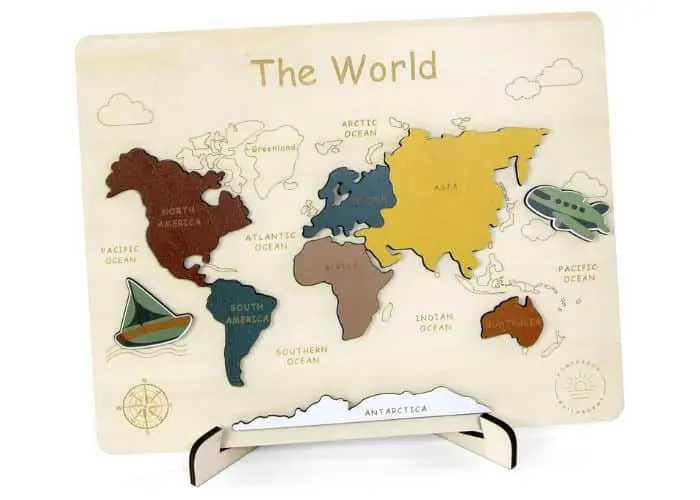
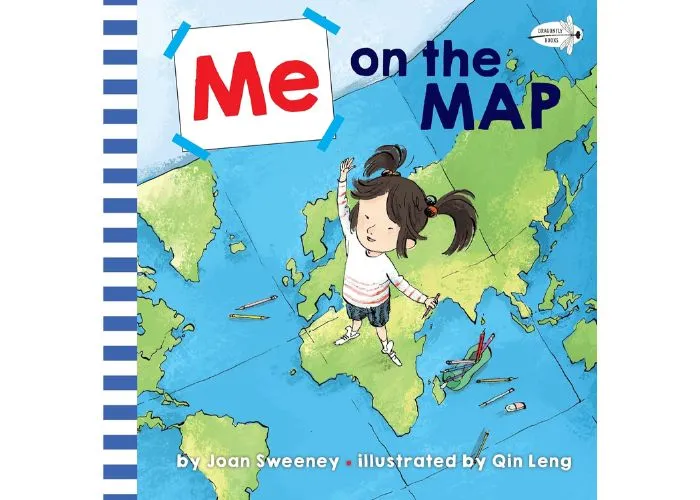
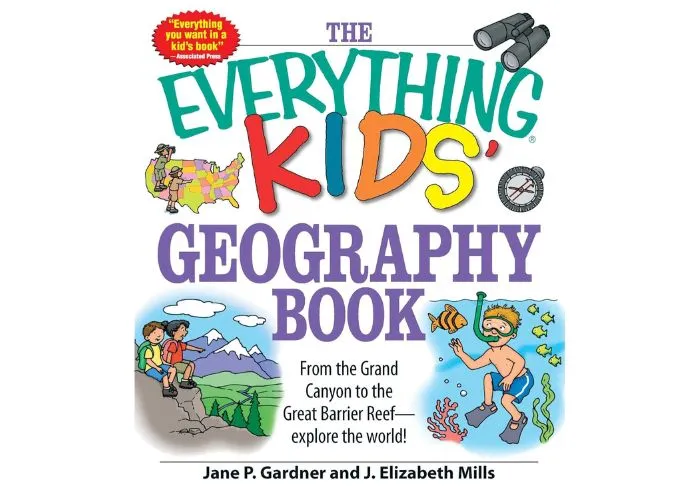

Leave a Reply